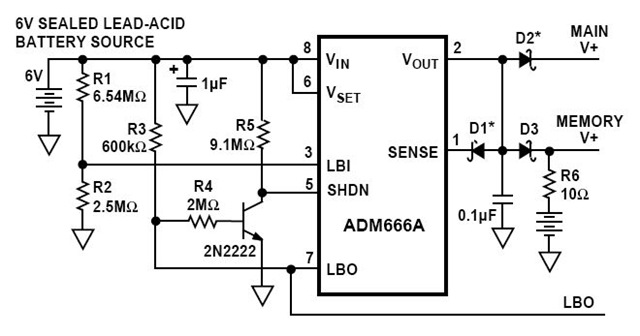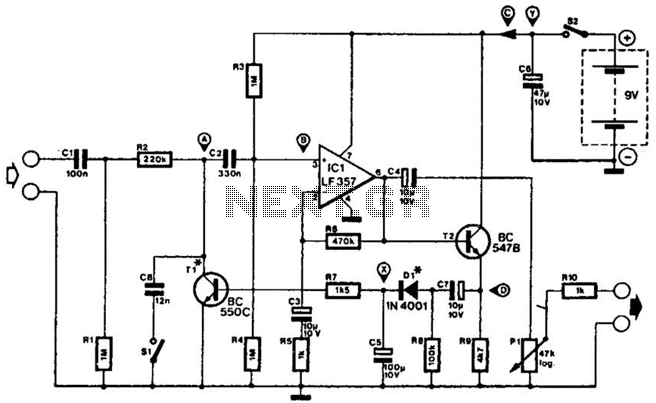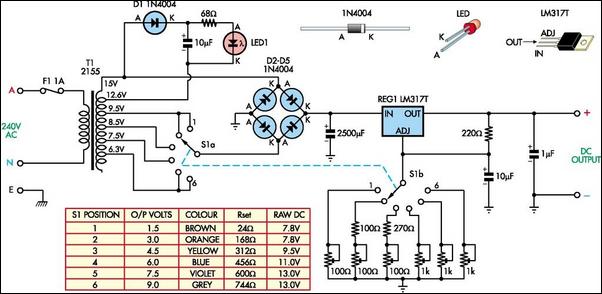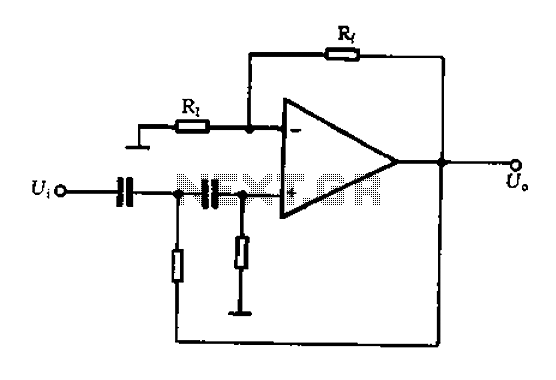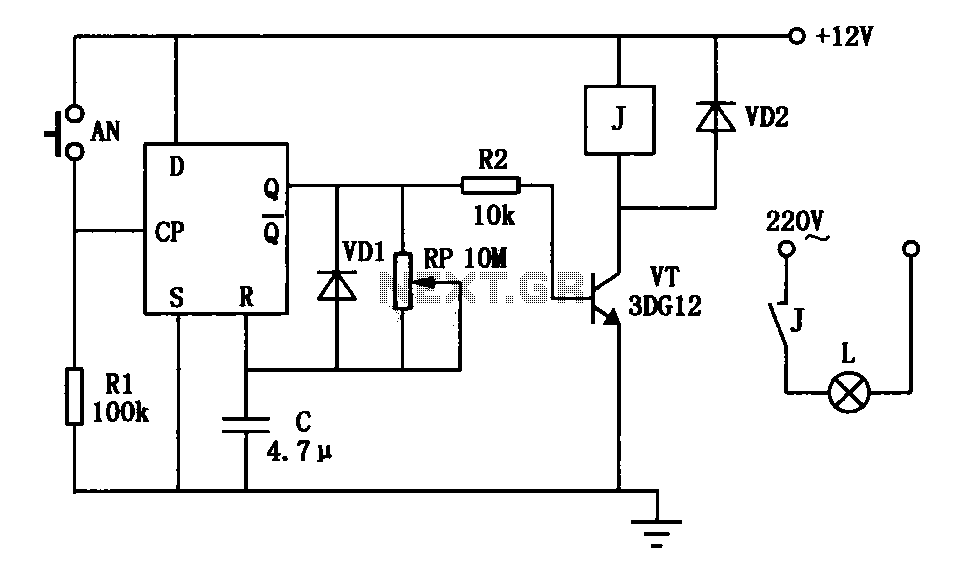
8 input Relays circuit
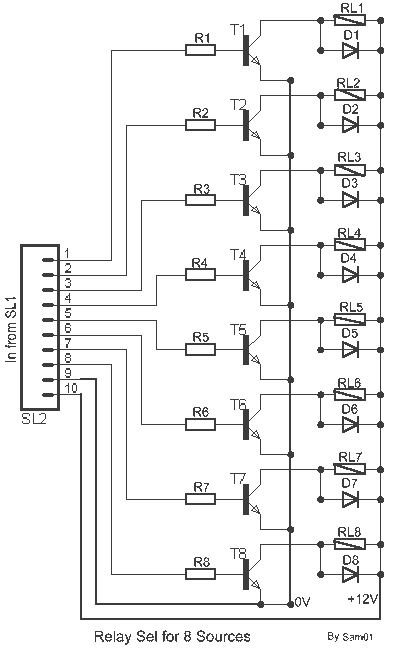
It is the essential continuity of circuits Sel 8 Sources and Up/Down Sel 8 Sources, but can work and autonomously, collaborating with any suitable circuit of control. The Relay 1-8 can be 6-24v DC. For current of collector of transistors Q1-8, bigger the 10 mA, it is better we use BD 139 or BD 679 with R 1-8 is 15K?.
Part List
R1-8=4.7 Kohms T1-8= BD139 (R1-8=15 Kohms if T1-8=BD679) RL1-8=6V-24V dc Relay D1-8=1N4148
The described circuit functions as a versatile control mechanism that integrates multiple relay outputs, specifically designed for applications requiring the selection of up to eight different sources. The relay system operates within a voltage range of 6-24V DC, allowing for flexibility in various electronic applications. The circuit is built around eight relays (RL1-8), which are activated through transistor switches (T1-8).
Transistors BD139 or BD679 are employed as switching elements, with the choice of transistor affecting the resistor values used in the circuit. When using BD139, a resistor value of 4.7 kΩ is recommended for each transistor (R1-8), whereas if BD679 is utilized, the resistor value should be increased to 15 kΩ. This adjustment ensures that the collector current through the transistors remains above 10 mA, which is optimal for reliable operation.
Diodes (D1-8) of type 1N4148 are included in the circuit to provide flyback protection for the relays, preventing voltage spikes generated during relay coil deactivation from damaging the transistors. The circuit's design allows it to function autonomously while also being compatible with other control circuits, making it suitable for integration into larger systems. This adaptability enhances its utility in various applications, including automation systems, control panels, and remote switching operations.
The overall configuration ensures that the circuit is efficient and can handle the necessary load requirements while maintaining a compact and organized layout. Proper consideration of component ratings and values is essential for achieving optimal performance and reliability in the intended application.It is the essential continuity of circuits Sel 8 Sources and Up/Down Sel 8 Sources, but can work and autonomously, collaborating with any suitable circuit of control. The Relay 1-8 can be 6-24v DC. For current of collector of transistors Q1-8, bigger the 10 mA, it is better we use BD 139 or BD 679 with R 1-8 is 15K?.
Part List R1-8=4.7 Kohms T1-8= BD139 (R1-8=15 Kohms if T1-8=BD679) RL1-8=6V-24V dc Relay D1-8=1N4148 🔗 External reference
Part List
R1-8=4.7 Kohms T1-8= BD139 (R1-8=15 Kohms if T1-8=BD679) RL1-8=6V-24V dc Relay D1-8=1N4148
The described circuit functions as a versatile control mechanism that integrates multiple relay outputs, specifically designed for applications requiring the selection of up to eight different sources. The relay system operates within a voltage range of 6-24V DC, allowing for flexibility in various electronic applications. The circuit is built around eight relays (RL1-8), which are activated through transistor switches (T1-8).
Transistors BD139 or BD679 are employed as switching elements, with the choice of transistor affecting the resistor values used in the circuit. When using BD139, a resistor value of 4.7 kΩ is recommended for each transistor (R1-8), whereas if BD679 is utilized, the resistor value should be increased to 15 kΩ. This adjustment ensures that the collector current through the transistors remains above 10 mA, which is optimal for reliable operation.
Diodes (D1-8) of type 1N4148 are included in the circuit to provide flyback protection for the relays, preventing voltage spikes generated during relay coil deactivation from damaging the transistors. The circuit's design allows it to function autonomously while also being compatible with other control circuits, making it suitable for integration into larger systems. This adaptability enhances its utility in various applications, including automation systems, control panels, and remote switching operations.
The overall configuration ensures that the circuit is efficient and can handle the necessary load requirements while maintaining a compact and organized layout. Proper consideration of component ratings and values is essential for achieving optimal performance and reliability in the intended application.It is the essential continuity of circuits Sel 8 Sources and Up/Down Sel 8 Sources, but can work and autonomously, collaborating with any suitable circuit of control. The Relay 1-8 can be 6-24v DC. For current of collector of transistors Q1-8, bigger the 10 mA, it is better we use BD 139 or BD 679 with R 1-8 is 15K?.
Part List R1-8=4.7 Kohms T1-8= BD139 (R1-8=15 Kohms if T1-8=BD679) RL1-8=6V-24V dc Relay D1-8=1N4148 🔗 External reference
